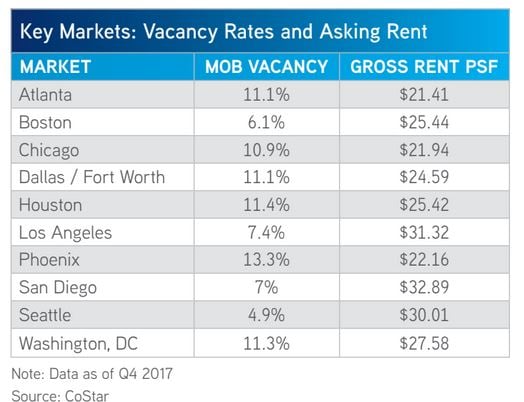
WASHINGTON, DC–The Washington DC metro area ended the first quarter relatively flat following a handful of large leases at the end of 2017, according to Cushman & Wakefield. As for the region's outlook, it remains mixed on limited, near-term, large tenant lease roll and supply concerns, says Nate Edwards, senior director of Cushman & Wakefield's Washington, DC Region Research Department.
To be sure there were a few notable leases executed in the first quarter of 2018, with new leases totaling 1.4 million-square feet surpassing the 10-year market average by nearly 100,000 square feet.
However, the majority of leases were consolidations often with contraction, C&W said. “The federal government, one of the largest lessees in Greater Washington, DC, continues to consolidate in value-oriented locations, often leaving behind sizable vacancies in its wake,” Edwards said in a prepared statement.
These dynamics continue to favor tenants, to state the obvious, in concessions, which “have continued to climb to unprecedented levels.” C&W writes that:
One concession package in particular was reported to have reached $150 psf in tenant improvements as well as a full 24 months of rental abatement, both the highest figures seen in Washington, D.C. in recent history.
Meanwhile metro-accessible submarkets in Suburban Maryland and Virginia are attracting an outsized share of suburban tenant demand, particularly when spaces have desired amenities, C&W said. Another ongoing trend seen this quarter: tightening in the Class B market as well decent activity in the trophy and new construction space is expected to lead to further distress in commodity Class A assets.
One bright spot for the DC metro is the approved omnibus spending bill with significant spending increases that are expected to accelerate federal contractor activity, particularly in suburban submarkets. But C&W also writes that:
While many of these economic gains will be seen in Northern Virginia, the District's real estate market should benefit as well, particularly around Capitol Hill, Southwest and the Capitol Riverfront.
© Touchpoint Markets, All Rights Reserved. Request academic re-use from www.copyright.com. All other uses, submit a request to [email protected]. For more inforrmation visit Asset & Logo Licensing.








